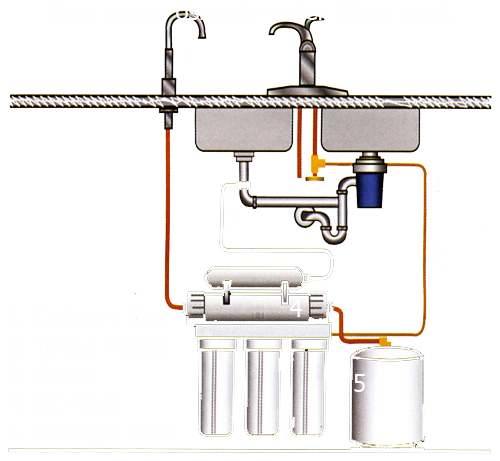How Reverse Osmosis Water Filters Work

The world is faced with a lot of problems and one of the major issues which concerns millions of individuals worldwide is the issue on water shortage. To deal with the matter, there have been a lot of efforts from scientists and experts from different areas of the world. Though the exact solution for water shortage has not yet been discovered, several methods have been identified to somehow provide sources of clean and potable water. One of the most well-known methods being used these days is the reverse osmosis water filtration process. Although the method is mainly used for desalination or the removal of salt from saltwater, several companies which provide emergency plumber services and other services involving sewages have also included the method to purify wastewater. Understanding how reverse osmosis water filters work is very important not only among experts but also among ordinary individuals who face the issue on water shortage.
Water treatment plants make use of several methods in order to recycle waste water from different areas. Through water treatment plants, the supply for water increases and the negative effects of water shortage are somehow reduced. Reverse osmosis filtration is a very efficient method to purify water. It effectively separates wastes, or inorganic solids, from the water through a semi-permeable membrane. The membrane, or the filter, is said to be semi-permeable since it does not allow all particles to pass in it. The semi-permeable membrane, which is said to be as thick as cellophane, allows only water to pass from one area to another while screening the other impurities. The movement of the water molecules from one area to another through the semi-permeable membrane is made possible by the pressure present in water.
In order to purify waste water, an apparatus manufactured to perform reverse osmosis is needed. The water is allowed to pass through the feeding duct continuously until it reaches the semi-permeable membrane. Upon reaching the membrane, the water freely passes through it while toxic compound such as bacteria, chemicals and other impurities are trapped in the area before the membrane. The purified water is then allowed to drain into a collecting duct while the impurities are drained into the waste collection duct.
Wastewater purification through reverse osmosis can be done by an emergency plumber as long as the equipment needed is available. The success rate of reverse osmosis may vary depending on the temperature of the water, the amount of impurities and other factors.
Advantages of using reverse osmosis filtration for water purification purposes include the following:
- It is highly efficient.
- It has been proven and supported by many studies and researches.
- It removes pollutants with a high rate of success.
- It is very convenient and energy-efficient.
The process of reverse osmosis is definitely a great help on the worldwide problem of water shortage. It can provide adequate water supply especially among areas with water issues. Although the mystery of the semi-permeable membrane, which is the same as that which is present in human cells, is not yet understood, experts in the field are trying their best to research and understand it better.

